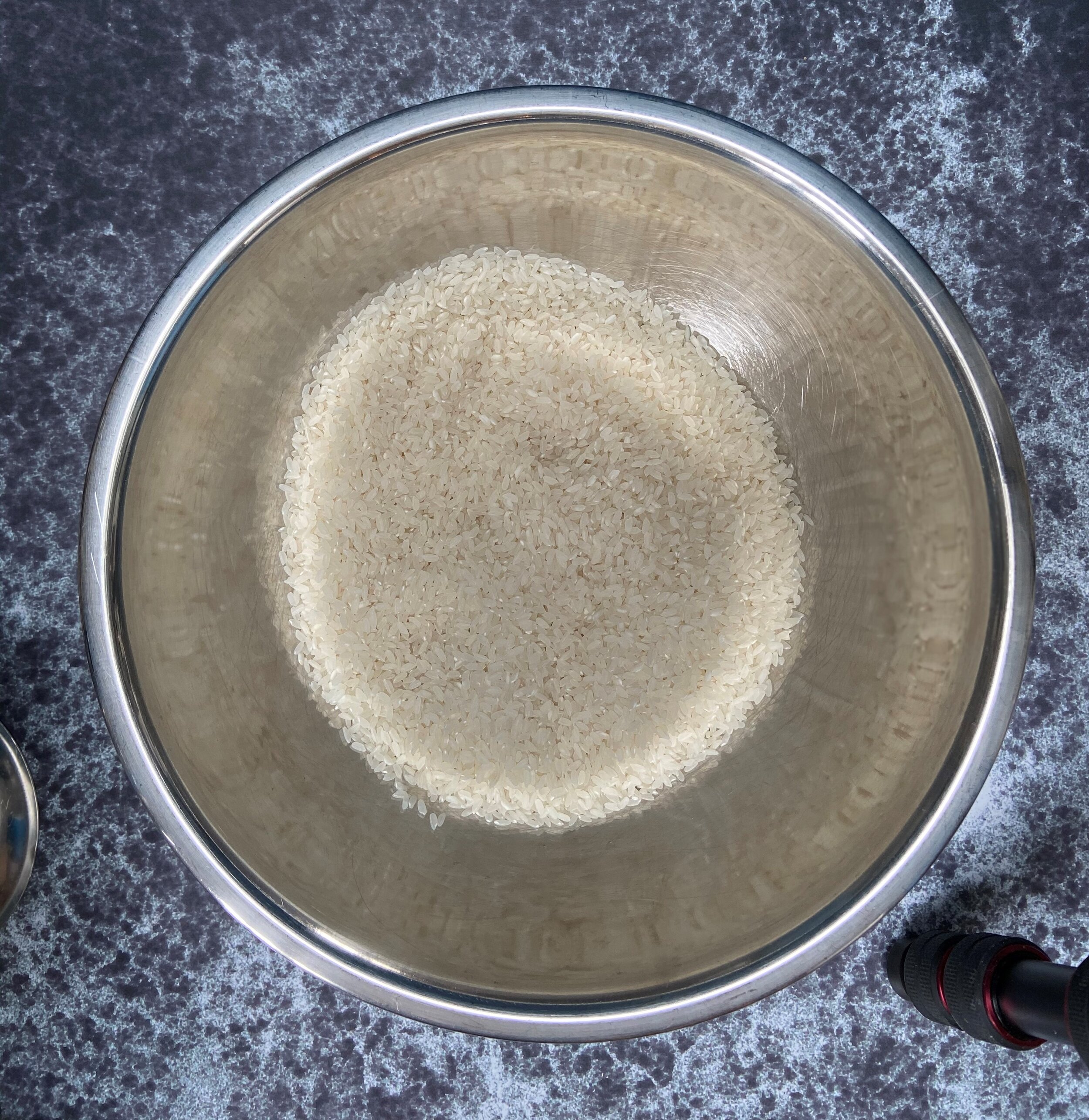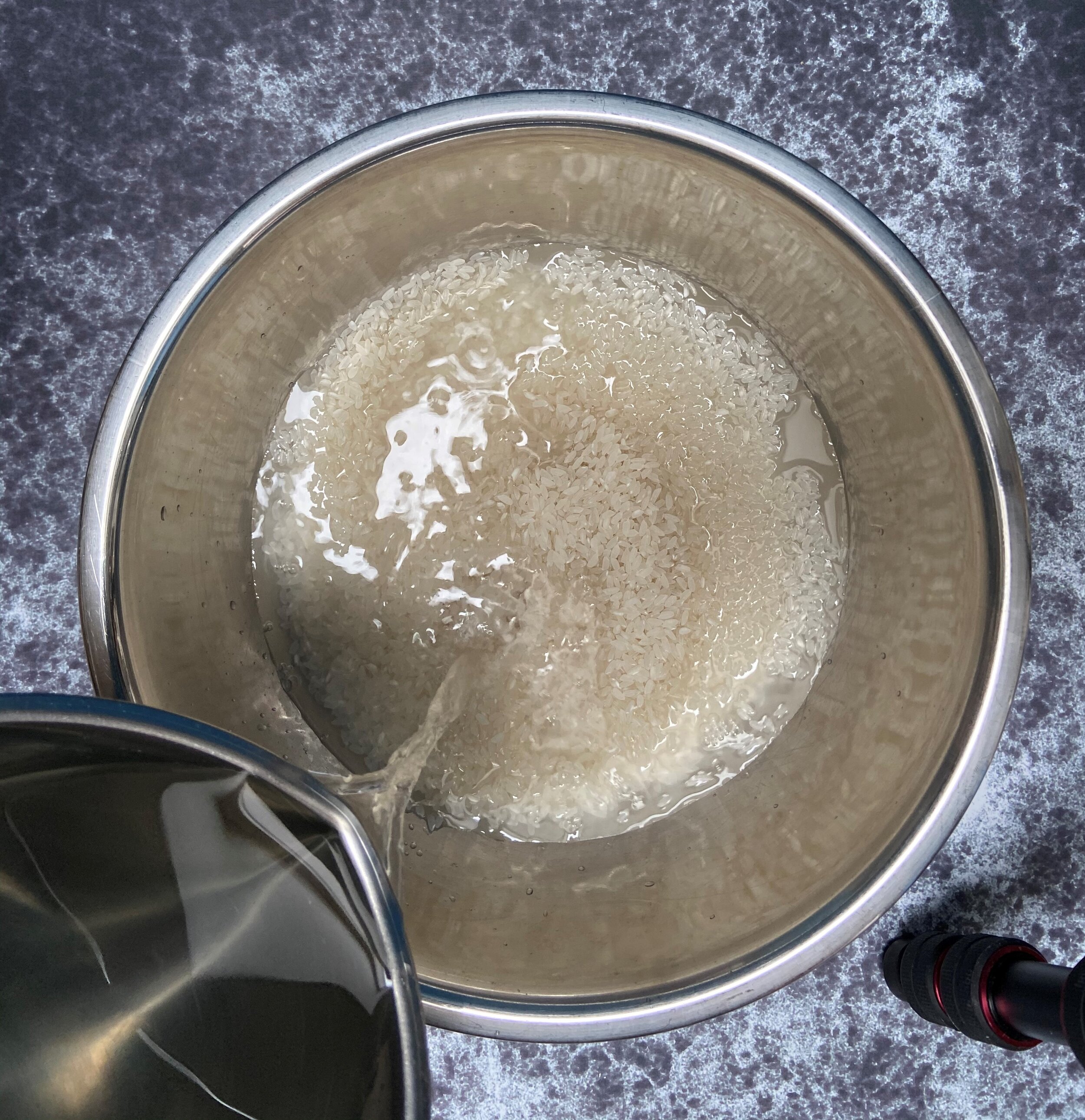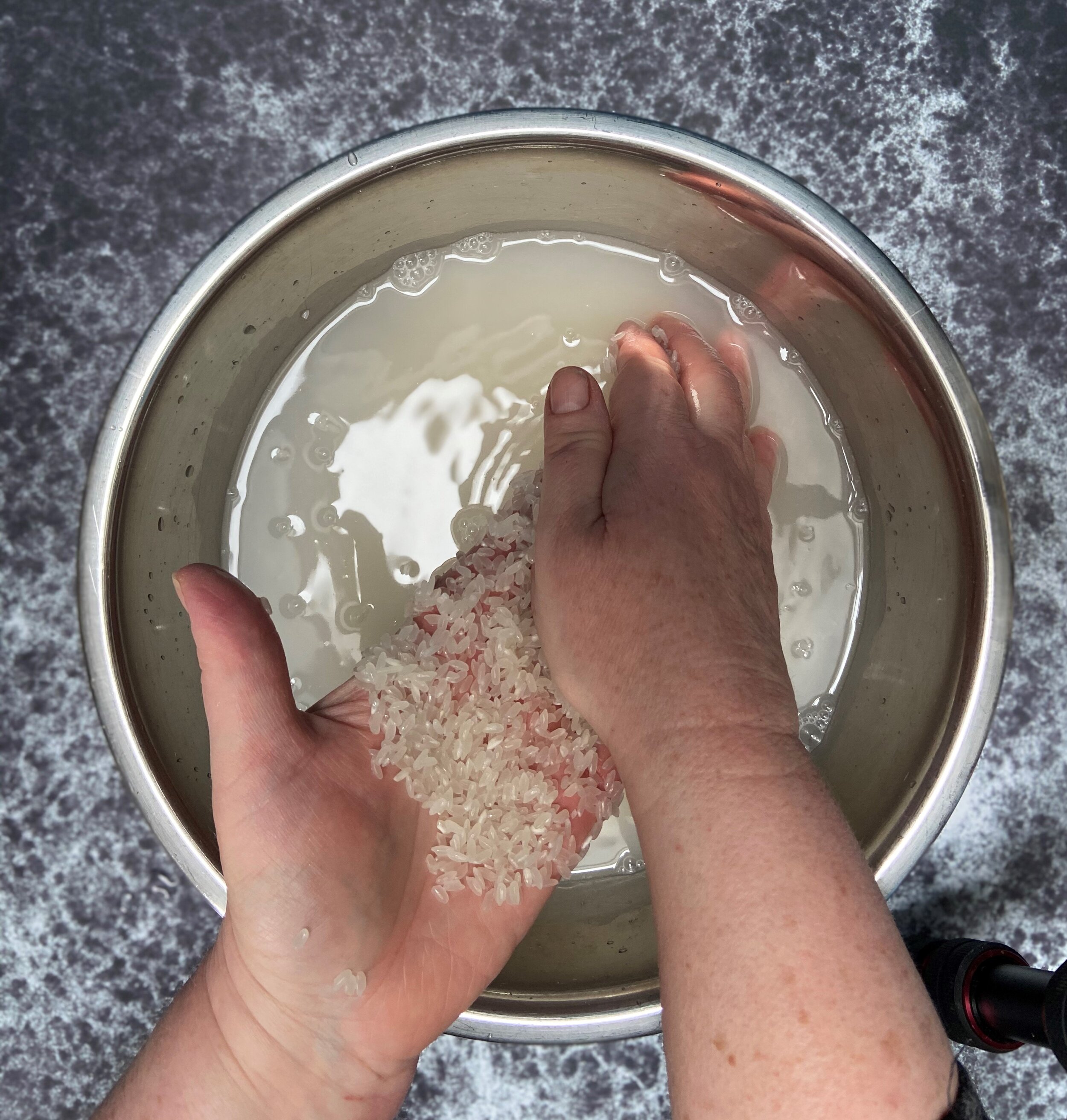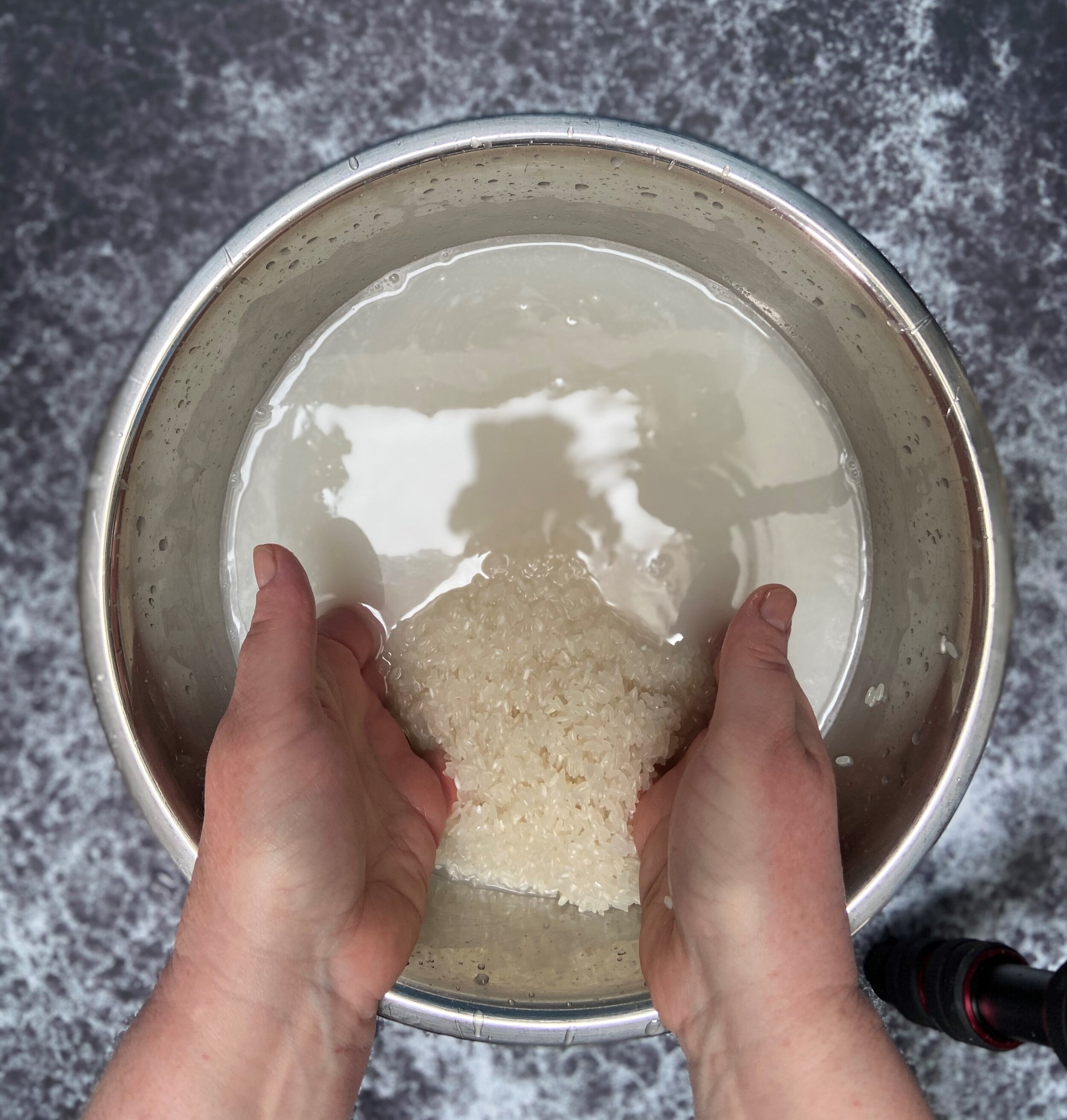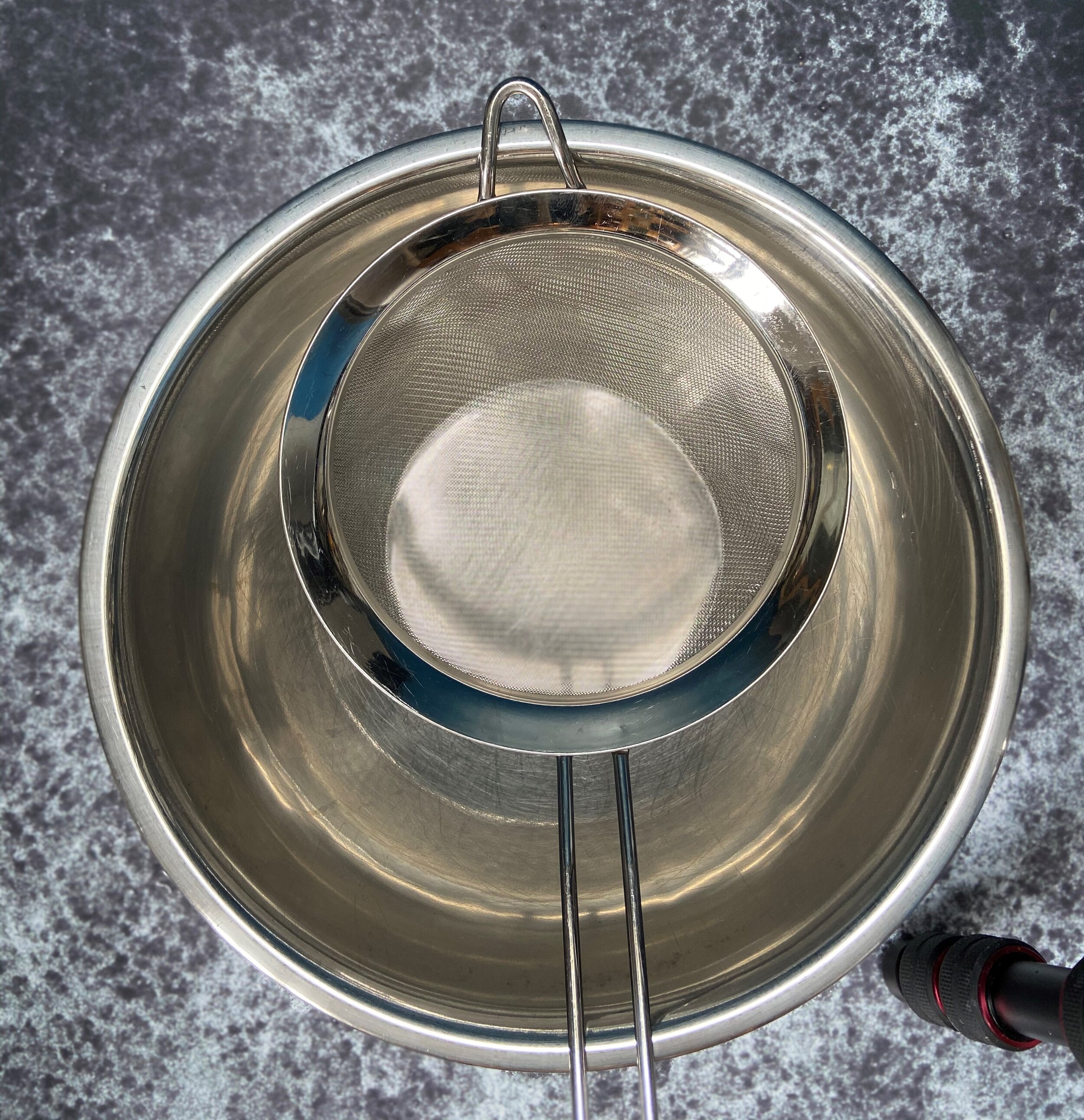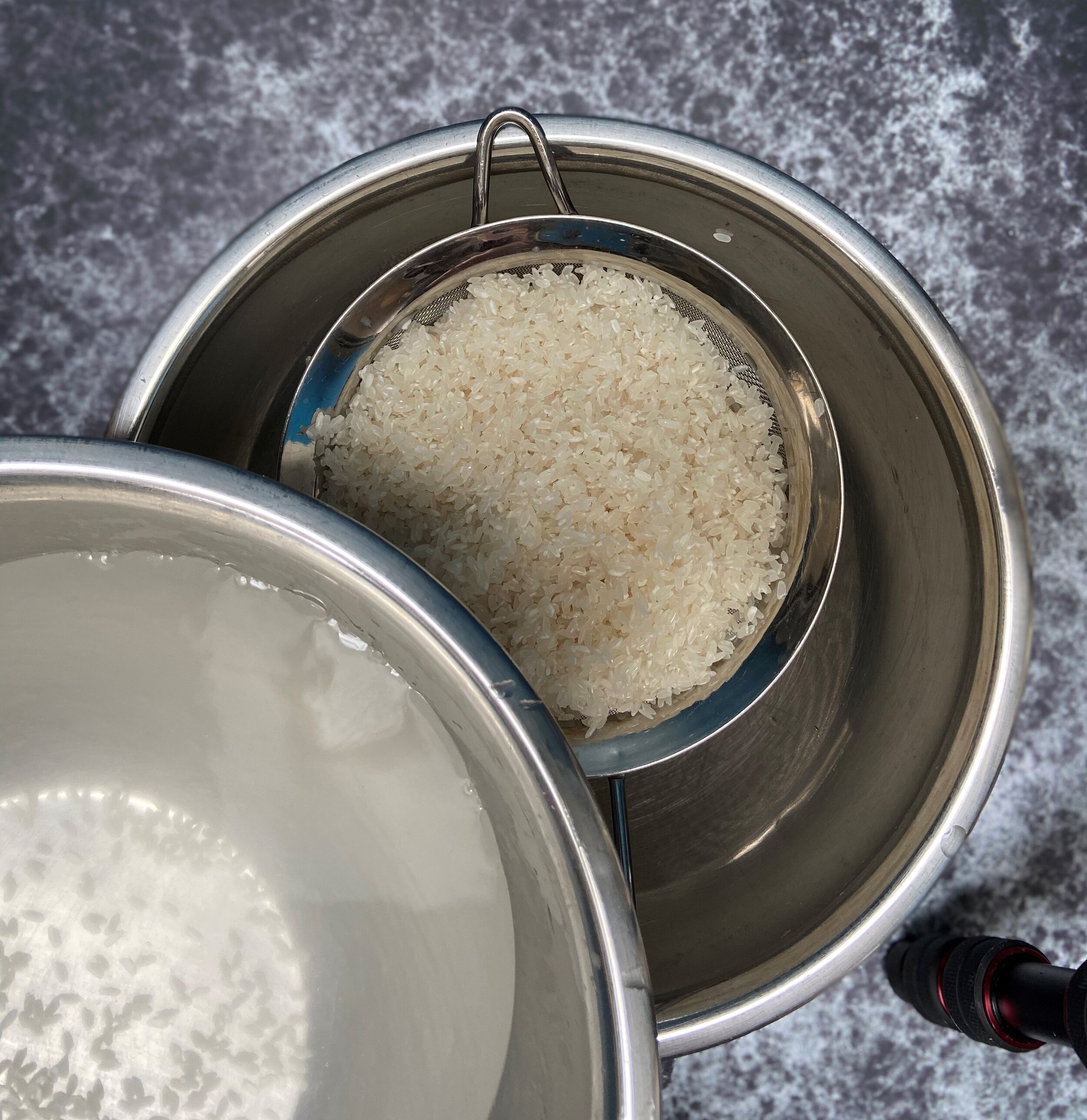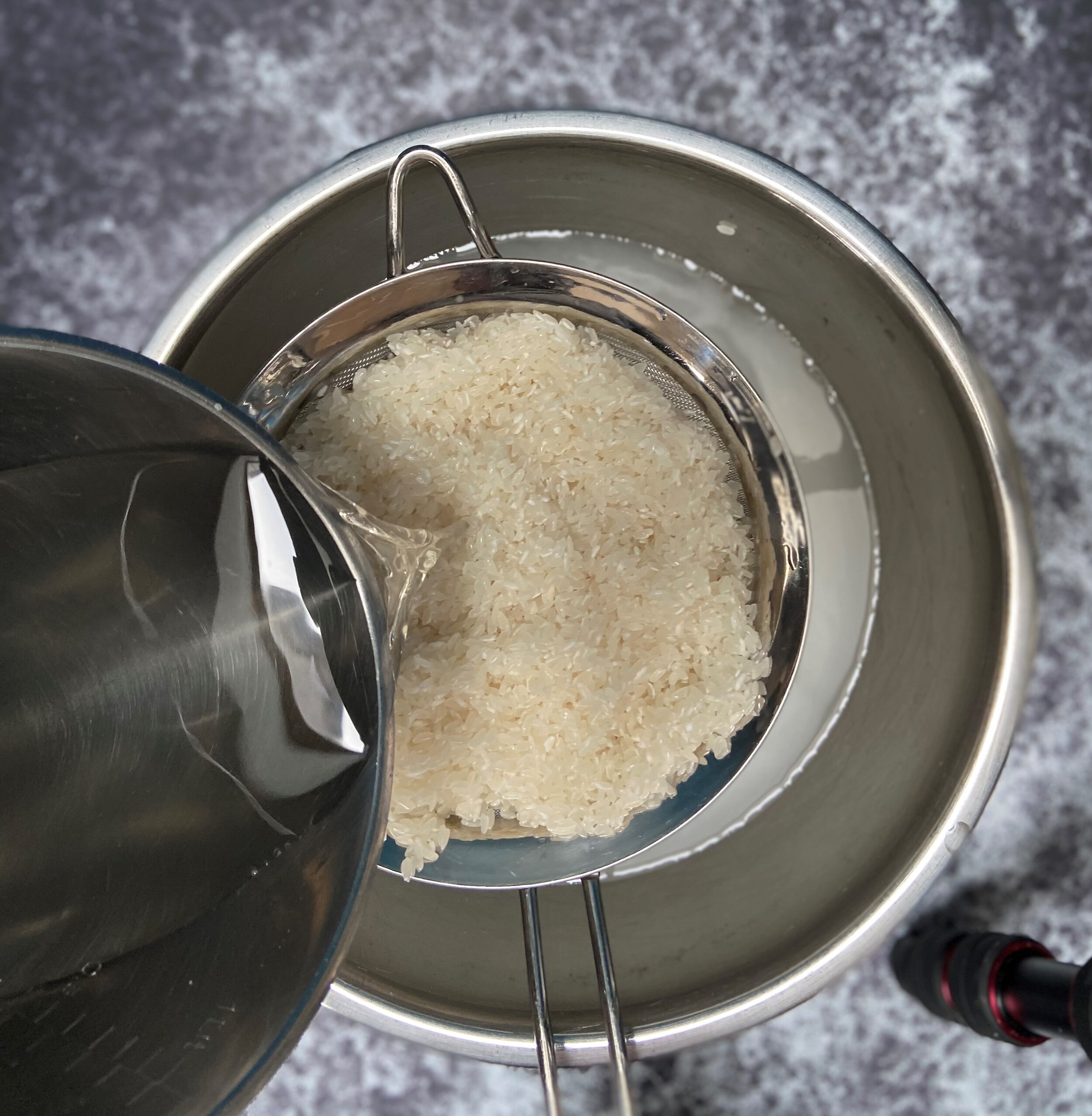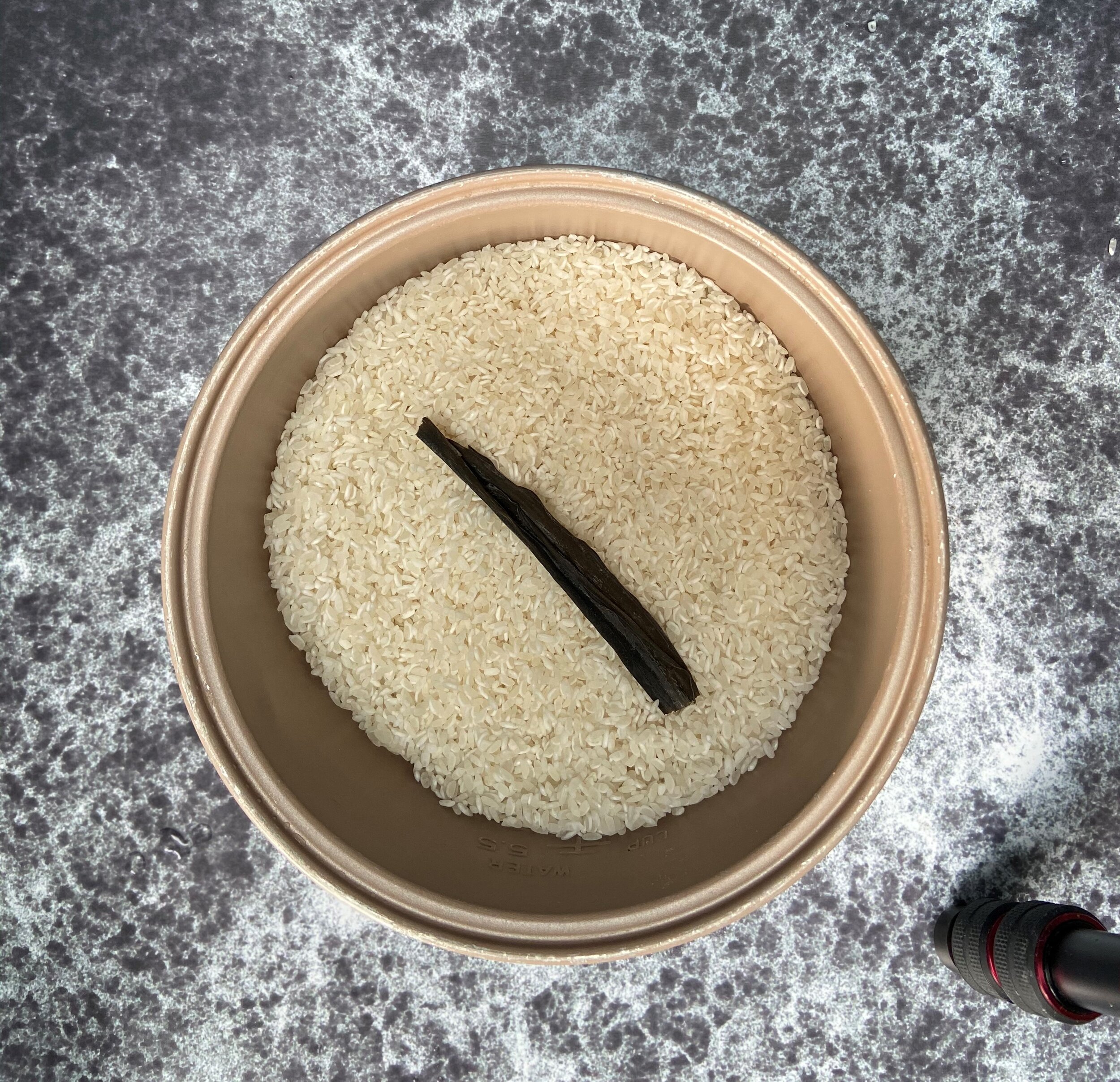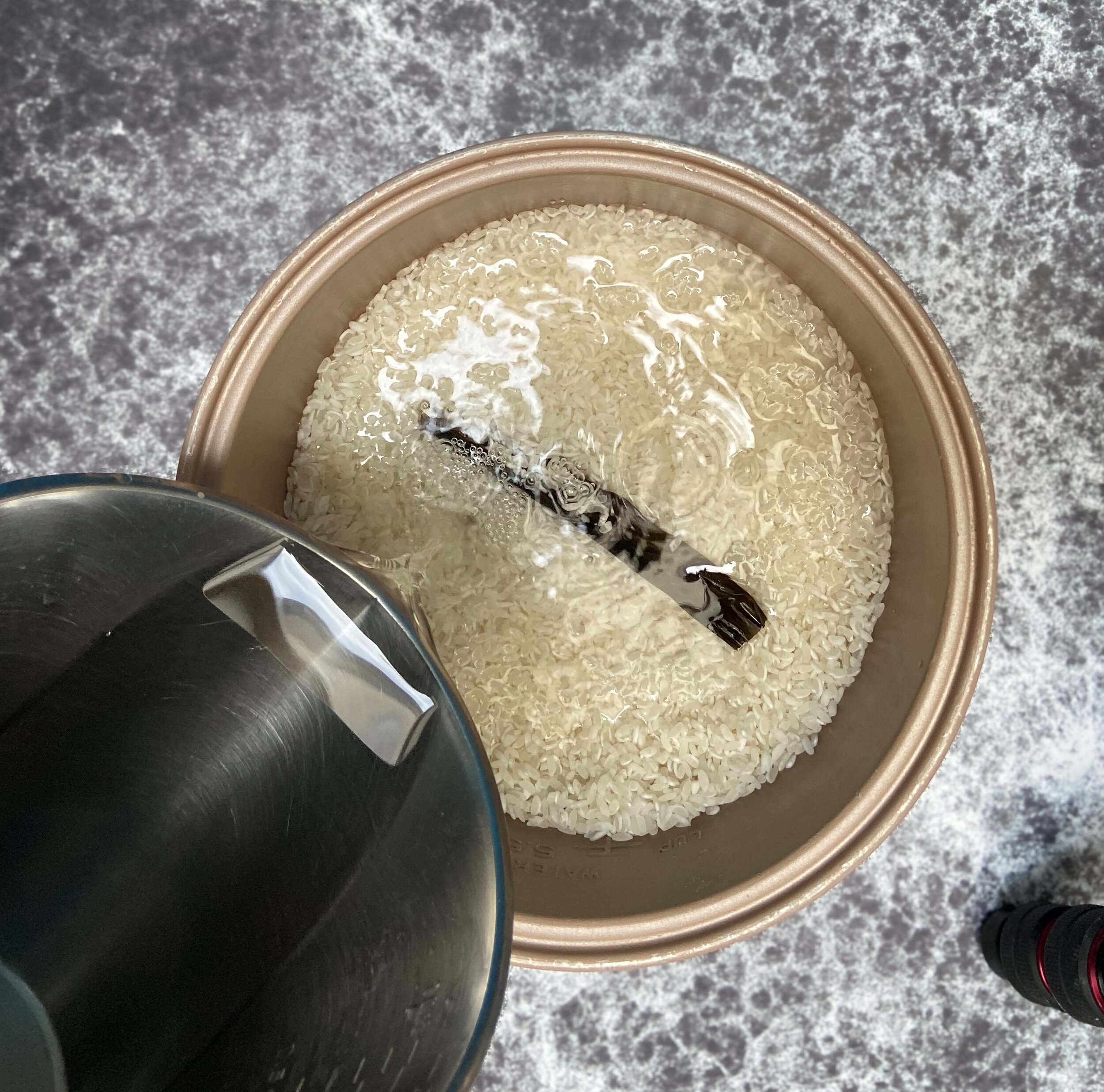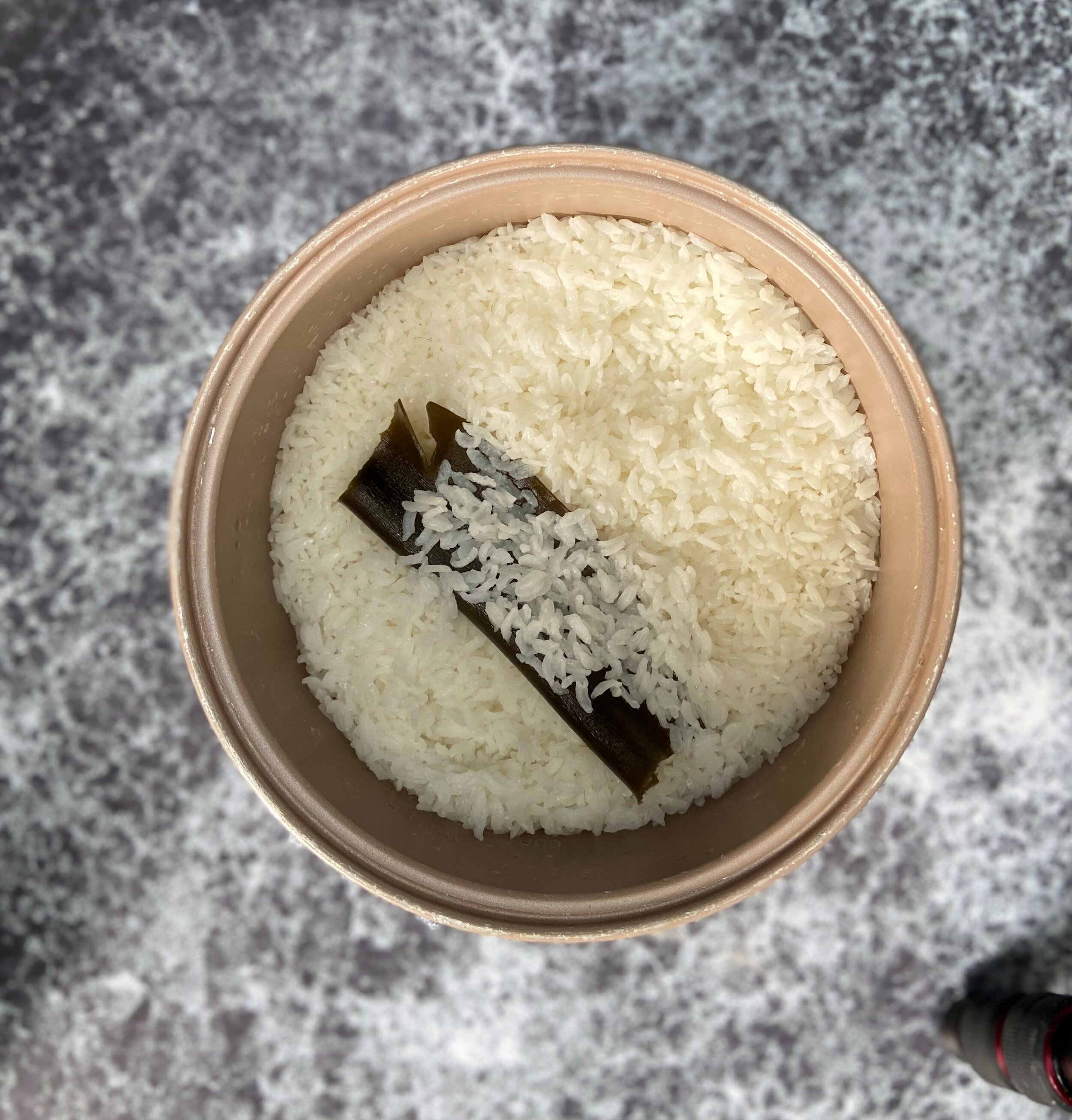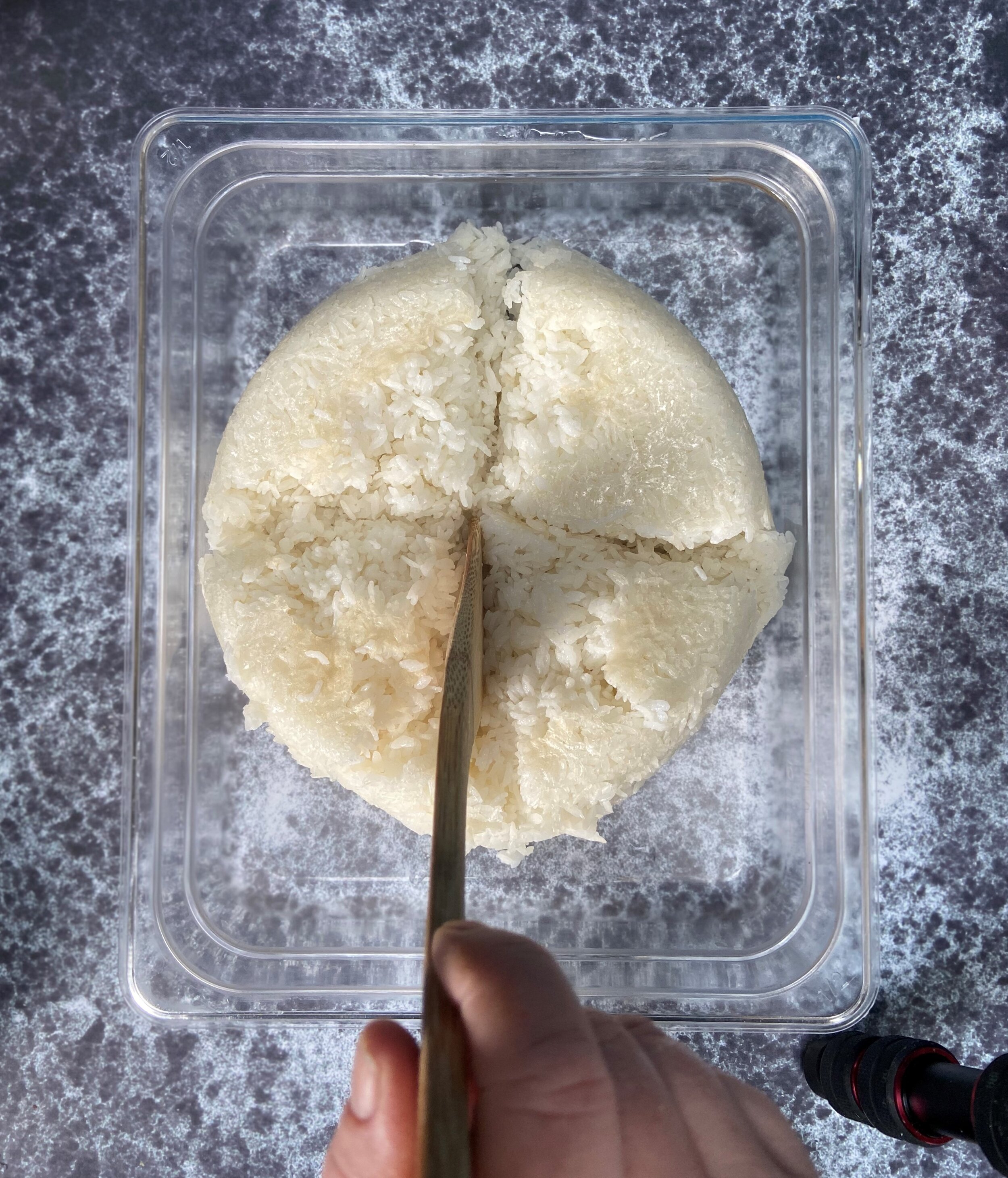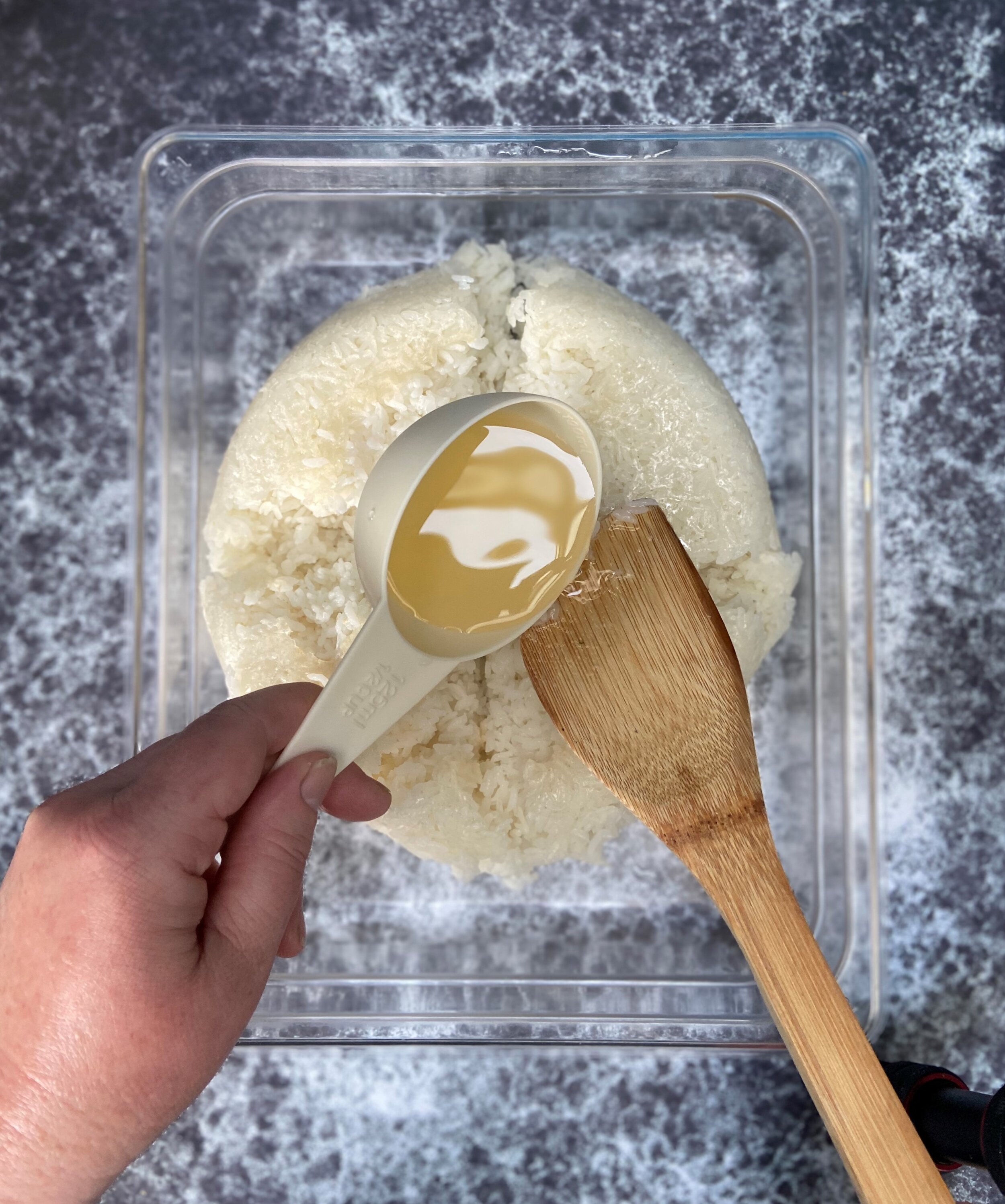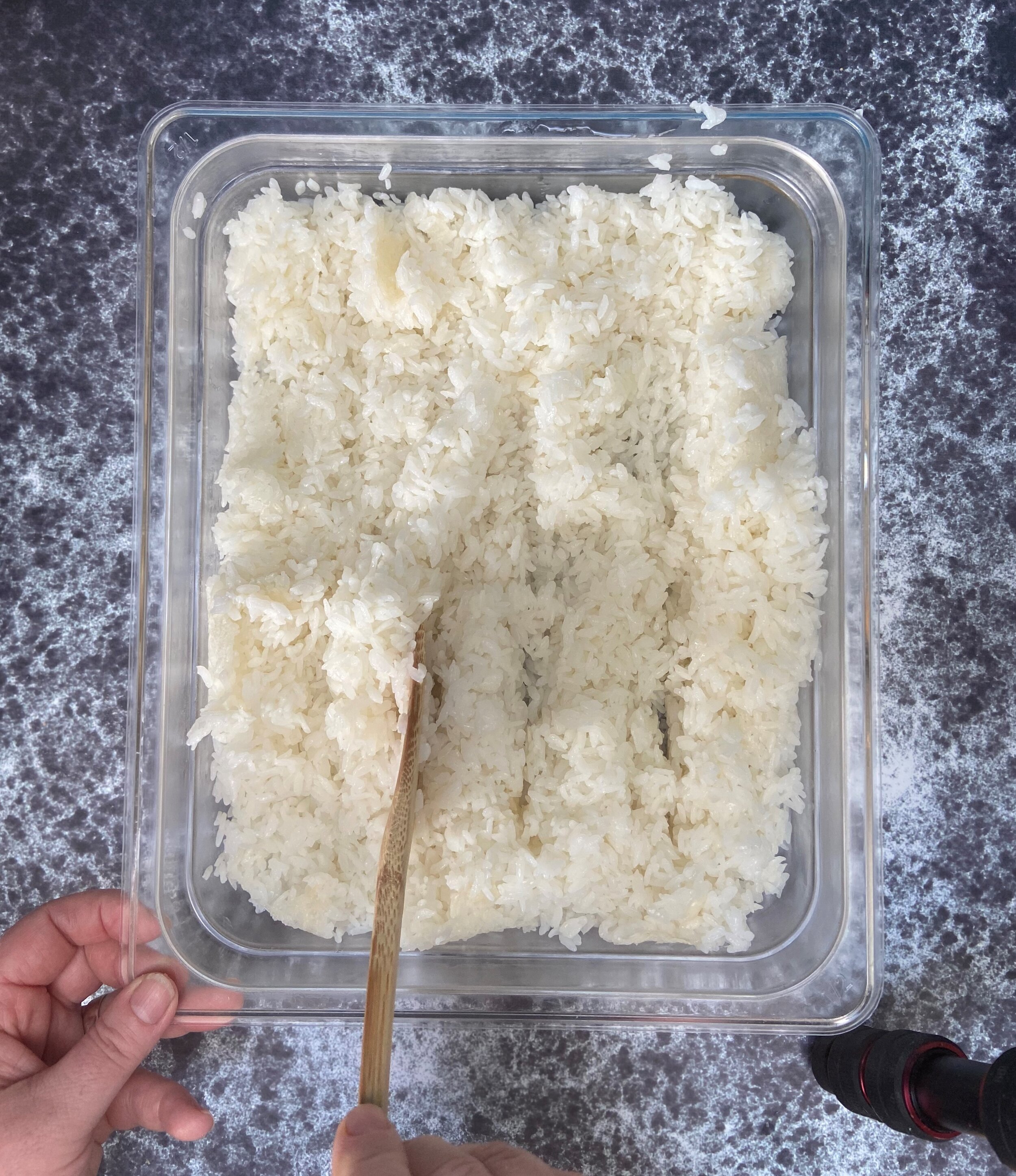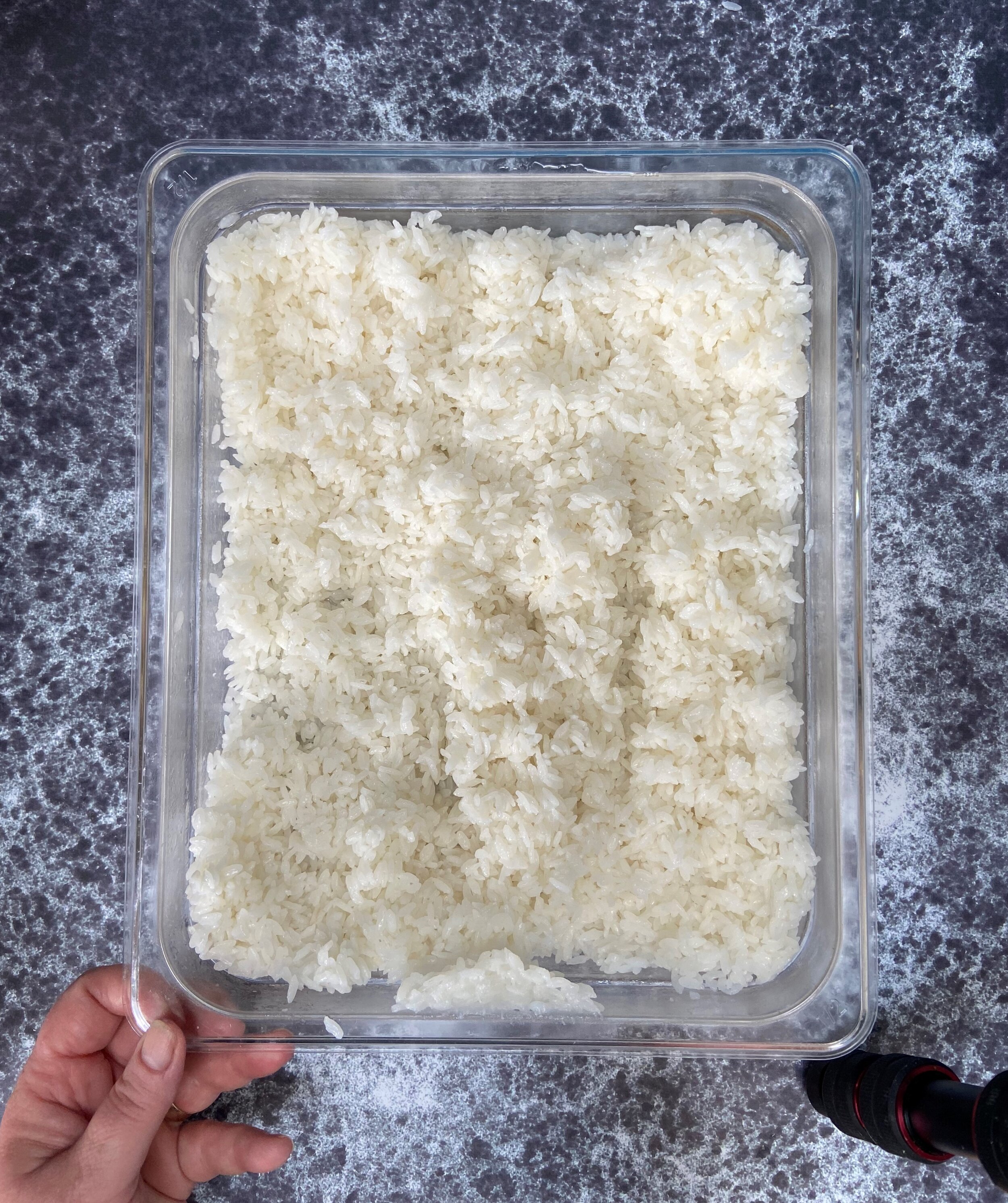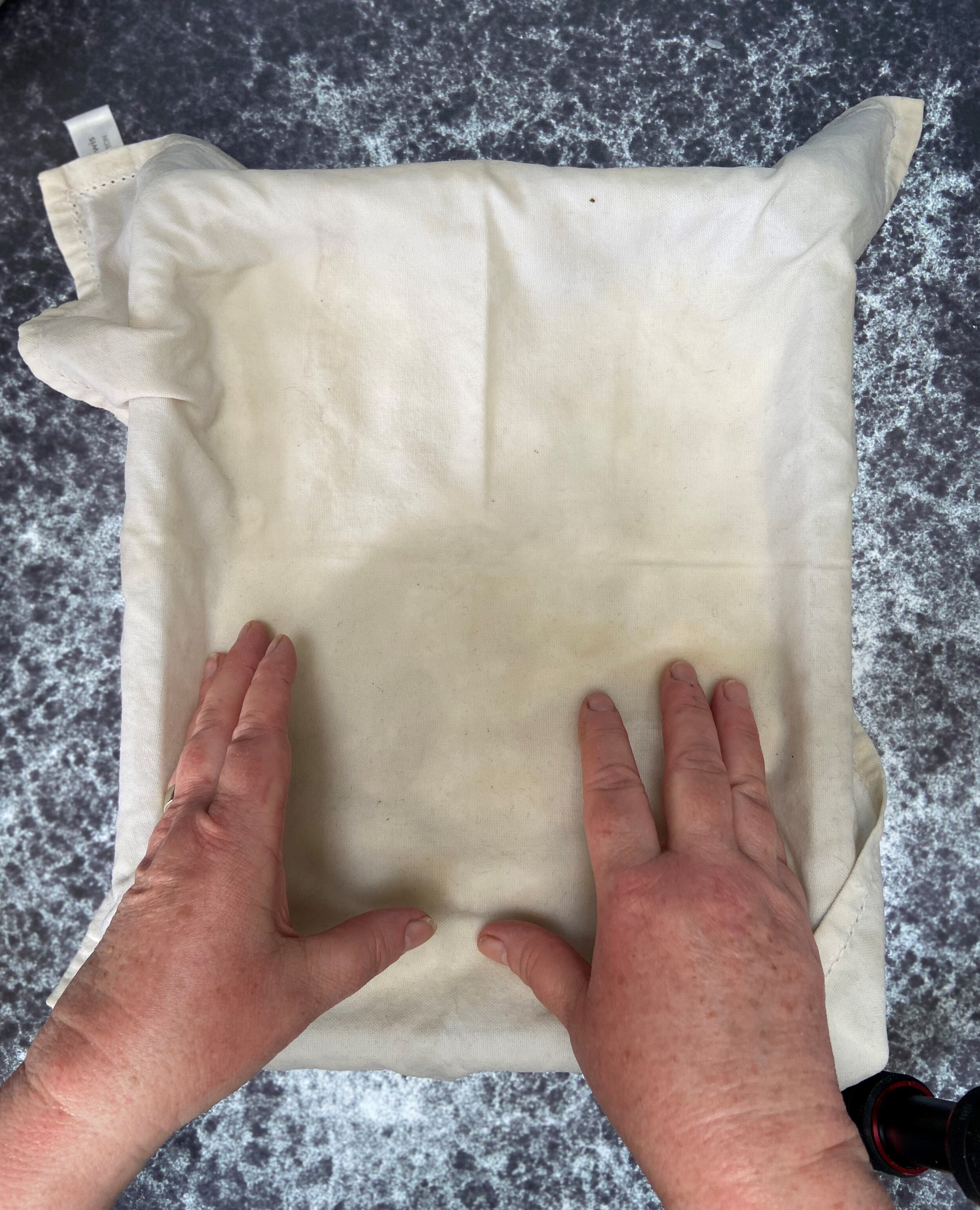I have cooked sushi rice daily for over 25 years, sticking to the same method of rinsing and tipping out water up to 10 times. I did this for the first 22 ears, then I changed. Why? I try to stay open minded to evolution and believe skills can always be enhanced, that is the joy of learning and teaching. Another factor that after repeatedly walking into sushi kitchens with running taps over sushi rice I was looking for a better way as water is also becoming a finite resource on planet earth. Traditionally washing rice does use a lot of water and washing 1 kilo can use up to 20 liters of water, so I felt it was time to address this. I have come up with a method which significantly reduces the water usage, but give the same result. In fact I have ended up with a method which is easier to control even when cooking small batches of rice. Here is my best take on this new found ‘risideology’.
THIS RECIPE IS NOW ALSO LIVE ON YouTube
This recipe makes about 900 grams of sushi rice, enough for 3 hungry adults or modestly feed 4 people. This amount of sushi rice will make 8-10 sushi rolls or 40 nigiri (or combination of the 2).
500 grams sushi rice
520 ml. water
1 cm dried konbu
60 ml sushi vinegar
I highly recommend to use a small rice cooker for cooking sushi rice as it gives a good even cook. The common household version hold up to 800 grams of uncooked rice. Alternatively use a small saucepan with a well fitting lid.
Here goes for cooking 500 grams raw sushi rice and do as follow: add sushi rice to a large mixing bowl and fill with 1 liter of water. Now polish the rice by grabbing a handful in each hand and gently rub against one another, using the palms of your hands. Drop rice back in the bowl, give the mixture a quick twirl with your hands and then repeat as before total 10 times. When the water is rich with starch and milky white its time to rinse the rice.
Place a sieve over another mixing bowl and transfer the rice to the sieve, then rinse with 1 – 1.5 liter of water to wash of the starch from the grains. This can also be done under a ‘gentle’ running tab, run for a few seconds watching below the sieve whilst the starch being washed of the grains – that is when the water is running clear. Leave the rice to rest for at least 30 minutes. Washed rice will last to the next day if kept in airtight container in the fridge. For the surplus starchy water a recommended secondary used would be adding to a soothing bath or watering of herbs and plants.
I cook sushi rice in 1:1 with 5-7% additional water and small piece of konbu. For 500 grams of washed rice add 510 ml. water, the washed rice will be slightly moist as it retained some of the moisture from the washing, taking that into considerations the 520ml. of water will suffice. The real pro sushi masters of Japan will use a rice-barometer to measure the moisture of the rice as it varies from sort, ages and harvest, this is indeed a very exact science, to establish the exact amount of water needed. One way of copying this method is to weigh the rice after washing and then top up with water to have exactly 1.1 kilo combined weight. Konbu, or kelp, is seaweed and the original natural flavor enhancer commonly used in Japanese food. The konbu help tenderise the rice for a slightly beyond al dente cook of the grains and brings out the ‘riceness’ of the rice whilst adding natural saltiness too. The salt from the konbu and the salt in the sushi vinegar will be plenty to season the rice, so no need to add salt here. Konbu is available form Asian stores or online.
Sushi vinegar is rice vinegar mixed with white sugar, salt and konbu extract. This is what makes the sushi rice sticky, the loosely steamed rice with a full absorption of the water, then bound together by the sushi vinegar. I recommend to buy a ready blend of sushi vinegar as a homemade recipes is a balancing act, it must hit the exact mix of acidity, sweetness and umami which can be challenging for a novice sushi master. Trusted sushi vinegar brands would be Mitzkan or Clearsping. In terms of how much sushi vinegar for rice ratio, general rule of thumb is using 60 ml. sushi vinegar per 500 grams uncooked rice. Place rice in cooking pan, add water and place konbu on top. I repeat here to use a rice cooker is highly recommendable or use a small saucepan with a well-fitting lid, bring rice to a ‘just’ boiling point, then let simmer for 12 minutes and rest for 10 minutes in the pot. Cooking in rice cooker set up: add rice, water and konbu to bowl, turn on red to cook, then leave in the cooker on amber for 5 minutes when the dial is switching.
Decant the rice into a shallow plastic tray and leave to ‘steam of’ for a few minutes letting the temperature drop from in the 90s to below 70s Celsius. Then mix in ready blended sushi vinegar by drizzling it across the full surface of rice and then ‘cut in’ the vinegar with a wide spatula cutting across the rice with diagonal movement for 5 minutes to ensure all grains of rice get a coating of the vinegar. Leave to cool for 10-15 minutes to below 30 Celsius, covered with a damp tea towel and use within 2 hours for best eating experience. Enjoy.
And the long read …. a little more about sushi rice:
Sushi rice is in the same family as arborio rice, the rice cultivated in Northern Italy for risotto and Spain for paella. It is short to medium grain rice with oval shaped grains, grains do varies in shape. The outer layers of the grain, the husk and the brain, has been removed through milling exposing the starchy core of the grain, the white rice grain kernel, we are all so familiar with. Please be mindful that paella nor risotto rice would be suitable for sushi. Why? Both risotto and paella are ‘designed’ fir a different cooking method: slow cooked first in oil, onion, garlic and flavorings (not dissimilar to pilaf rice dishes), then stock is gradually added to expand and soften the grain and the starch of the grain is an integral part of the dish. Therefore arborio rice is used for dishes based on the starch of the grains being incorporated in the dish through slow cooking adding flavored stock. Also sushi rice is in fact steamed, tenderly for a full absorption of the water resulting in loosely packed grains. The most important principal of sushi rice is removing the starch prior to cooking and the stickiness of the sushi rice is from the mixing in of the sushi vinegar, not from the cooking process. Hence technically different cooking methods and historically the cultivation of the grains has been adapted to suit these principals.
Sushi rice is available in 100s sorts, brands and level of quality globally, my general recommendation is to aim for medium quality and a middle price point. There will be cost savings to be had buying a 5 or 10 kilo bag as sushi rice keeping it in an airtight container for up to one year, available form Asian supermarkets or online. Smaller packs of 500 grams to 1 kilo is now commonly found in supermarkets. Like wheat flour sushi rice varies tremendous in quality, season, origin, farming method etc. which all impact on the final result. I therefore like to do above recipe measuring the rice before and after washing, as all these variables impact on how much water the rice will absorb after the starch has been removed from the grain. Like baking, be precise and add a big dose of love, an investment which pays dividend for the outcome of your sushi rice. Like baking repeat makes master, do not despair if not perfect first time, but build up courage and try again.
Sushi rice is grown in rice paddy fields across Asia, California. Australia, Spain and Italy, interestingly we have one season in Europe growing the sushi rice from seeds whereas most of Asia is managing 2 seasons growing the rice from seedlings, this is related to the difference in seasons, the Monsoon and tradition. A significant part of the sushi rice available on the UK market is grown in Northern Italy by Italian farmers and millers with the support of Japanese scientist to ensure high quality. There has been a trend for Italian grown sushi rice in Europe over the last decade. I personally welcome this evolution as the merger of Italian rice cultivation tradition with Japanese know how gives a great result and making our sushi rice a little more local in my opinion. It is of course also a merger of 2 great food cultures with respect for the raw ingredient.

